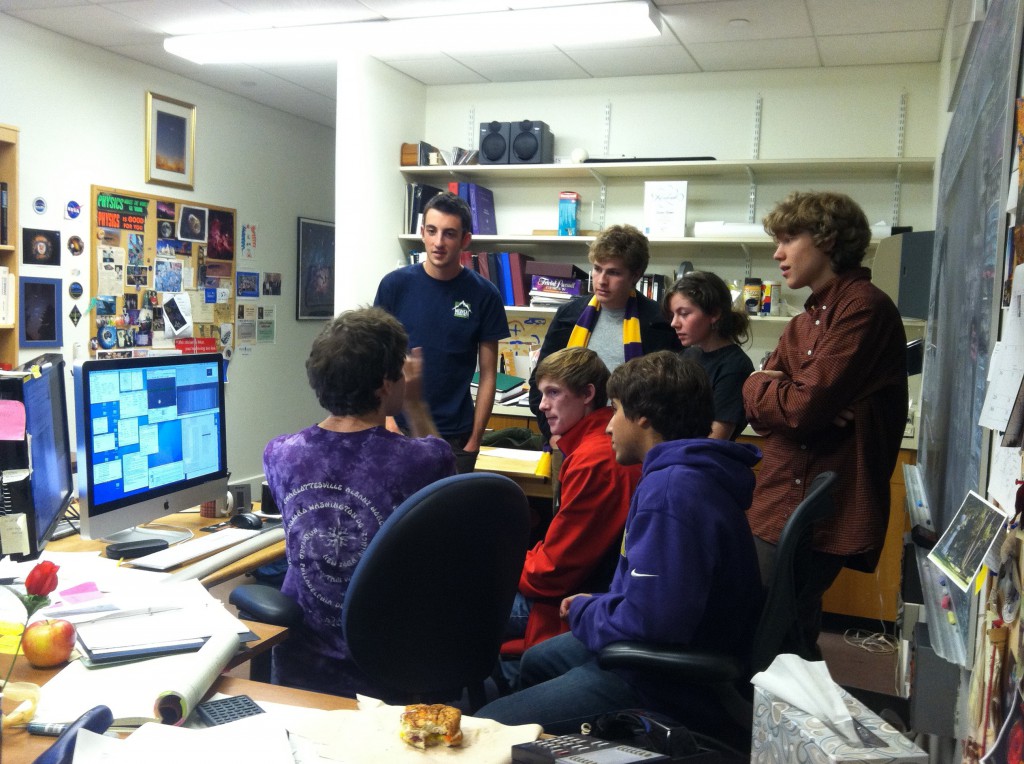updated 7/6/19
As of July 1, 2019, I am emerita and not teaching regular semester classes. This page describes the courses I had the pleasure of teaching over the past many years.
I regularly taught Astronomy 111, “Introduction to Astrophysics,” the introductory astrophysics course for potential majors. Starting in the fall of 2019, it will be taught by Assistant Professor Anne Jaskot.
I taught our observing course, Astronomy 211, “Astronomical Observing and Data Analysis,” on the techniques and technology of modern astronomical observing. Students learned how to plan, carry out, reduce and analyze real astronomical data using our 24-inch telescope, CCD detectors, and other equipment on our observing deck. Professor Jaskot and Dr. Kevin Flaherty, Lecturer in Astronomy, will teach this course next in Spring 2020.
I also taught a course on the interstellar medium, Astronomy 402T, “Between the Stars,” an upper-level tutorial in my research specialty. In this class students did observing and computer work to explore the various manifestations of matter between the stars and the physical mechanisms that produce them. Going forward, students can look forward to new special-topics courses.
In past years I also taught Astronomy 207T: “Extraterrestrial Life in the Galaxy: A Sure Thing or a Snowball’s Chance?,” a tutorial on the search for extraterrestrial life in the Galaxy. Among other topics, students discussed the formation of life on Earth; conditions elsewhere in the solar system that might be suitable; the burgeoning roster of exoplanets and their characteristics, which can tell us about the formation and architecture of planetary systems; and the ongoing search for radio and optical signals from extraterrestrial civilizations.
Finally, in the spring of 2019, I taught Astronomy 330, “The Nature of the Universe,” a junior/senior non-majors course on cosmology. With a little bit of algebra and perseverance, non-specialists can understand a surprising amount of cosmological material. This is a fascinating time to be learning cosmology, given the exciting recent measurements pinpointing the age of the Universe and its current rate of expansion and acceleration, as well as new discoveries like dark energy, and theories of why the Universe behaves as it does.
Combining teaching and research interests, my colleague Dick Henry and I have developed a Gallery of Planetary Nebula Spectra, presenting spectra of more than 160 of these objects in the Milky Way and the Andromeda Galaxy that we have observed over the years. The website offers a browsable format that also contains a zoomable spectrum display. The site contains atlas information for all the objects and links to images. Several exercises designed to help explore the data are also available.


